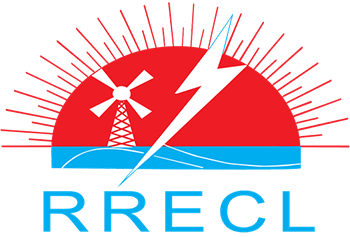A wind turbine is a device that converts the kinetic energy of wind into electrical energy. As of 2020, hundreds of thousands of large turbines, in installations known as wind farms, were generating over 650 Gigawatts of power, with 60 GW added each year. Wind turbines are an increasingly important source of intermittent renewable energy, and are used in many countries to lower energy costs and reduce reliance on fossil fuels. One study claimed that, as of 2009, wind had the "lowest relative greenhouse gas emissions, the least water consumption demands and the most favorable social impacts" compared to photovoltaic, hydro, geothermal, coal and gas energy sources.
Smaller wind turbines are used for applications such as battery charging for auxiliary power for boats or caravans, and to power traffic warning signs. Larger turbines can contribute to a domestic power supply while selling unused power back to the utility supplier via the electrical grid.
Wind turbines are manufactured in a wide range of sizes, with either horizontal or vertical axes.
The windwheel of Hero of Alexandria (10 AD – 70 CE) marks one of the first recorded instances of wind powering a machine. However, the first known practical wind power plants were built in Sistan, an Eastern province of Persia (now Iran), from the 7th century. These "Panemone" were vertical axle windmills, which had long vertical drive shafts with rectangular blades. Made of six to twelve sails covered in reed matting or cloth material, these windmills were used to grind grain or draw up water, and were used in the gristmilling and sugarcane industries.
Wind power first appeared in Europe during the Middle Ages. The first historical records of their use in England date to the 11th and 12th centuries; there are reports of German crusaders taking their windmill-making skills to Syria around 1190. By the 14th century, Dutch windmills were in use to drain areas of the Rhine delta. Advanced wind turbines were described by Croatian inventor Fausto Veranzio in his book "Machinae Novae" (1595), he described vertical axis wind turbines with curved or V-shaped blades.
Wind Power Density (WPD) is a quantitative measure of wind energy available at any location. It is the mean annual power available per square meter of swept area of a turbine, and is calculated for different heights above ground. Calculation of wind power density includes the effect of wind velocity and air density.
Wind turbines are classified by the wind speed they are designed for, from class I to class III, with A to C referring to the turbulence intensity of the wind.
Efficiency
Conservation of mass requires that the amount of air entering and exiting a turbine must be equal. Accordingly, Betz's law gives the maximal achievable extraction of wind power by a wind turbine as 16/27 (59.3%) of the rate at which the kinetic energy of the air arrives at the turbine.
The maximum theoretical power output of a wind machine is thus 16/27 times the rate at which kinetic energy of the air arrives at the effective disk area of the machine.
Wind-to-rotor efficiency (including rotor blade friction and drag) are among the factors affecting the final price of wind power. Further inefficiencies, such as gearbox losses, generator and converter losses, reduce the power delivered by a wind turbine. To protect components from undue wear, extracted power is held constant above the rated operating speed as theoretical power increases at the cube of wind speed, further reducing theoretical efficiency. In 2001, commercial utility-connected turbines delivered 75% to 80% of the Betz limit of power extractable from the wind, at rated operating speed.
Types
The three primary types: VAWT Savonius, HAWT towered; VAWT Darrieus as they appear in operation
Wind turbines can rotate about either a horizontal or a vertical axis, the former being both older and more common. They can also include blades or be bladeless. Household-size vertical designs produce less power and are less common.
Savonius wind turbine
These are drag-type devices with two (or more) scoops that are used in anemometers, Flettner vents (commonly seen on bus and van roofs), and in some high-reliability low-efficiency power turbines. They are always self-starting if there are at least three scoops.
Twisted Savonius is a modified savonius, with long helical scoops to provide smooth torque. This is often used as a rooftop wind turbine and has even been adapted for ships.
Technology
Generally, efficiency increases along with turbine blade lengths. The blades must be stiff, strong, durable, light and resistant to fatigue. Materials with these properties include composites such as polyester and epoxy, while glass fiber and carbon fiber have been used for the reinforcing. Construction may involve manual layup or injection molding. Retrofitting existing turbines with larger blades reduces the task and risks of redesign.
As of 2021, the longest blade was 115.5 m (379 ft), producing 15 MW with a maximum noise level of 118 dB(A). Blades need to function over a 100 million load cycles over a period of 20–25 years.
Small Wind Turbines for Households
A small Quietrevolution QR5 Gorlov type vertical axis wind turbine in Bristol, England. Measuring 3 m in diameter and 5 m high, it has a nameplate rating of 6.5 kW to the grid.
Small wind turbines may be used for a variety of applications including on- or off-grid residences, telecom towers, offshore platforms, rural schools and clinics, remote monitoring and other purposes that require energy where there is no electric grid, or where the grid is unstable. Small wind turbines may be as small as a fifty-watt generator for boat or caravan use. Hybrid solar and wind powered units are increasingly being used for traffic signage, particularly in rural locations, as they avoid the need to lay long cables from the nearest mains connection point. The U.S. Department of Energy's National Renewable Energy Laboratory (NREL) defines small wind turbines as those smaller than or equal to 100 kilowatts. Small units often have direct drive generators, direct current output, aeroelastic blades, lifetime bearings and use a vane to point into the wind.
Larger, more costly turbines generally have geared power trains, alternating current output, and flaps, and are actively pointed into the wind. Direct drive generators and aeroelastic blades for large wind turbines are being researched.
Maintenance
Wind turbines need regular maintenance to stay reliable and available. In the best case turbines are available to generate energy 98% of the time. Ice accretion on turbine blades has also been found to greatly reduce the efficiency of wind turbines, which is a common challenge in cold climates where in-cloud icing and freezing rain events occur. De-icing is mainly performed by internal heating, or in some cases by helicopters spraying clean warm water on the blades.
Modern turbines usually have a small onboard crane for hoisting maintenance tools and minor components. However, large, heavy components like generator, gearbox, blades, and so on are rarely replaced, and a heavy lift external crane is needed in those cases. If the turbine has a difficult access road, a containerized crane can be lifted up by the internal crane to provide heavier lifting.
Repowering
Installation of new wind turbines can be controversial. An alternative is repowering, where existing wind turbines are replaced with bigger, more powerful ones, sometimes in smaller numbers while keeping or increasing capacity.
Demolition and recycling
Some wind turbines which are out of use are recycled or repowered. 85% of turbine materials are easily reused or recycled, but the blades, made of a composite material, are more difficult to process.
Interest in recycling blades varies in different markets and depends on the waste legislation and local economics. A challenge in recycling blades is related to the composite material, which is made of fiberglass with carbon fibers in epoxy resin, which cannot be remolded to form new composites. So the options are to send the blade to landfill, to reuse the blade and the composite material elements found in the blade, or to transform the composite material into a new source of material.
Wind farm waste is less toxic than other garbage. Wind turbine blades represent only a fraction of overall waste in the US, according to the Wind-industry trade association, American Wind Energy Association. In the US the town of Casper, Wyoming has buried 1,000 non-recyclable blades in its landfill site, earning $675,000 for the town.
Advantages
Wind turbines produce electricity at between two and six cents per kilowatt hour, which is one of the lowest-priced renewable energy sources. As technology needed for wind turbines continued to improve, the prices decreased as well. In addition, there is currently no competitive market for wind energy, because wind is a freely available natural resource, most of which is untapped. The main cost of small wind turbines is the purchase and installation process, which averages between $48,000 and $65,000 per installation. The energy harvested from the turbine will offset the installation cost, as well as provide virtually free energy for years.
Wind turbines provide a clean energy source, use little water, emitting no greenhouse gases and no waste products during operation. Over 1,400 tonnes (1,500 short tons) of carbon dioxide per year can be eliminated by using a one-megawatt turbine instead of one megawatt of energy from a fossil fuel.
Disadvantages
Wind turbines can be very large, reaching over 140 m (460 ft) tall and with blades 55 m (180 ft) long, and people have often complained about their visual impact.
*Source-Wikipedia.



